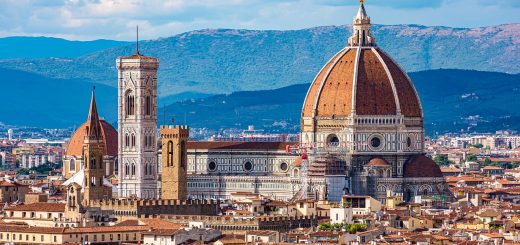Croatia

Exploring Croatia: A Journey through Culture, Cuisine, and Coastal Beauty
Croatia, a gem of the Adriatic, is a country that seamlessly blends history, culture, and natural beauty. Nestled in Southeastern Europe, this Mediterranean paradise has become a top travel destination in recent years, drawing in visitors with its stunning coastal towns, rich heritage, and delectable cuisine. In this travel guide, we’ll take you on a journey through the diverse regions, vibrant cities, and unique cultural experiences that Croatia has to offer.
Regions of Croatia
Croatia is divided into several distinct regions, each with its own charm and allure. Here are some of the must-visit regions:
Dalmatia: The coastal region of Dalmatia is renowned for its picturesque coastline, dotted with islands, historic towns, and crystal-clear waters. Split and Dubrovnik are two of its major cities.
Istria: Located in the northwest, Istria is known for its rolling hills, vineyards, and charming seaside villages. Pula, with its ancient Roman amphitheater, is a highlight.
Zagreb and Central Croatia: The capital city, Zagreb, offers a blend of Austro-Hungarian and Croatian influences, while the surrounding region is dotted with castles and picturesque landscapes.
Slavonia: The eastern region of Slavonia boasts serene landscapes, lush green plains, and a slower pace of life. Osijek and Vukovar are notable cities in this region.
Main City Travel Destinations
Croatia boasts several cities that are not only vibrant urban centers but also rich in history and culture. Here are some of the main city travel destinations:
Dubrovnik: Known as the “Pearl of the Adriatic,” Dubrovnik is a UNESCO World Heritage Site. Its well-preserved medieval walls, cobblestone streets, and stunning Old Town make it a must-visit destination.
Split: Split is home to the magnificent Diocletian’s Palace, a Roman emperor’s retirement home turned city within a city. Explore the historic heart of the city and stroll along the Riva promenade.
Zagreb: Croatia’s capital, Zagreb, offers a blend of old-world charm and modern sophistication. Don’t miss the historic Upper Town and the vibrant Lower Town with its museums, galleries, and cafes.
Zadar: Known for its unique Sea Organ and Sun Salutation installations, Zadar offers a mix of modern and historic attractions. The Old Town is a delight for history enthusiasts.
Pula: This Istrian gem is famous for its well-preserved Roman amphitheater, which hosts concerts and events during the summer months. Explore the city’s Roman history and enjoy the coastal scenery.
Culture and Architecture
Croatia’s culture and architecture are deeply rooted in its history, with influences from the Roman, Venetian, Austro-Hungarian, and Ottoman empires. Here’s a glimpse into the country’s cultural and architectural riches:
Roman Heritage: The Roman influence is evident in cities like Split and Pula, where ancient ruins and architecture can be explored.
Venetian Influence: Venice’s legacy is felt in the architecture of Dubrovnik and other coastal towns, characterized by beautiful palaces, churches, and fortified walls.
Austro-Hungarian Elegance: Zagreb showcases the Austro-Hungarian architectural style with its grand buildings and charming squares.
Traditional Croatian Villages: Away from the cities, traditional Croatian villages offer a glimpse into rural life, complete with stone houses and local customs.
Croatian Cuisine
Croatian cuisine is a delightful blend of Mediterranean, Central European, and Balkan flavors. Don’t leave Croatia without trying these culinary delights:
Seafood: Croatia’s coastline means that fresh seafood is a staple. Try grilled fish, calamari, and black risotto, a dish made with cuttlefish ink.
Peka: This traditional Dalmatian dish involves slow-cooking meat or seafood with vegetables under a bell-like lid, resulting in tender and flavorful meals.
Istrian Truffles: Istria is famous for its truffles, which are often used to flavor pasta and risotto dishes.
Pljeskavica: Croatia’s answer to a burger, pljeskavica is a savory minced meat patty often served in a flatbread with various toppings.
Wine and Olive Oil: Croatia produces excellent wines and olive oil. Take a wine tour in Istria or enjoy a tasting session in one of the coastal vineyards.
Best Time to Travel
The best time to visit Croatia largely depends on your preferences:
Summer (June to August): This is the peak tourist season when the weather is warm, and the coastal towns are bustling with life. Perfect for beachgoers and outdoor enthusiasts.
Spring (April to May) and Autumn (September to October): These shoulder seasons offer pleasant weather, fewer crowds, and lower prices. Ideal for sightseeing and hiking.
Winter (November to March): While coastal areas are quieter during winter, Zagreb comes alive with Christmas markets and festivities. If you prefer a more intimate experience, this is the time to visit.
Getting Around Croatia
Croatia offers various transportation options for travelers:
By Car: Renting a car is an excellent way to explore the country, especially if you plan to visit remote areas. The road network is well-maintained.
Public Transport: Croatia has an extensive public transport system, including buses, trams, and ferries. It’s a cost-effective way to get around, especially between cities.
Island Hopping: Ferries and catamarans connect the coastal towns and islands, making island hopping a popular and scenic way to explore the coastline.
Cycling: Croatia’s diverse landscapes are perfect for cycling enthusiasts. There are dedicated cycling routes and bike rentals available.
In conclusion, Croatia is a captivating destination that offers a blend of history, culture, and natural beauty. From the stunning coastal towns of Dubrovnik and Split to the vibrant capital city of Zagreb, Croatia has something to offer every traveler. Whether you’re exploring ancient Roman ruins, savoring delectable seafood, or simply basking in the Mediterranean sun, Croatia promises an unforgettable journey. So, pack your bags, plan your itinerary, and get ready to discover the magic of Croatia.

















